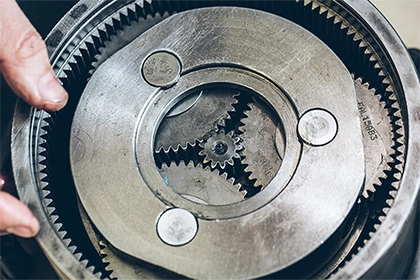
What are synchronous induction motors?
A synchronous induction motor is a type of electric motor that relies on magnetic fields to produce rotation, and operates at a constant speed that is synchronized with the frequency of the AC power supply.
A synchronous induction motor is a type of electric motor that uses a rotating magnetic field to produce torque and rotate the rotor of the motor. Unlike a standard induction motor, a synchronous induction motor is designed to operate at a specific speed, known as the synchronous speed.
In a synchronous induction motor, the stator's magnetic field is generated by a three-phase winding that is connected to the three phase AC power supply. The three-phase winding is arranged in a specific way to produce a rotating magnetic field that rotates at a constant speed, known as the synchronous speed.
The rotor of a synchronous induction motor is typically made up of a series of bars that are short-circuited at their ends, forming a squirrel cage structure. When the stator's magnetic field rotates, it induces a current in the squirrel cage rotor, and the current flowing through the rotor produces its own magnetic field. The interaction between the stator's magnetic field and the rotor's magnetic field causes the rotor to rotate at the same speed as the stator's magnetic field, which is the synchronous speed of the motor.
One of the key differences between a synchronous induction motor and a standard induction motor is that the rotor of a synchronous induction motor rotates at the same speed as the stator's magnetic field. In a standard induction motor, the rotor rotates at a slightly lower speed than the stator's magnetic field, and this difference in speed is called the slip. In a synchronous induction motor, the rotor and the stator's magnetic field rotate at the same speed, so there is no slip.
In summary, a synchronous induction motor is a type of electric motor that uses a rotating magnetic field to produce torque and rotate the rotor of the motor. The stator's magnetic field is generated by a three-phase winding that is connected to the three phase AC power supply, and the rotor of a synchronous induction motor is typically made up of a squirrel cage structure. The rotor of a synchronous induction motor rotates at the same speed as the stator's magnetic field, and there is no slip between the rotor and the stator's magnetic field.



Leave a Comment